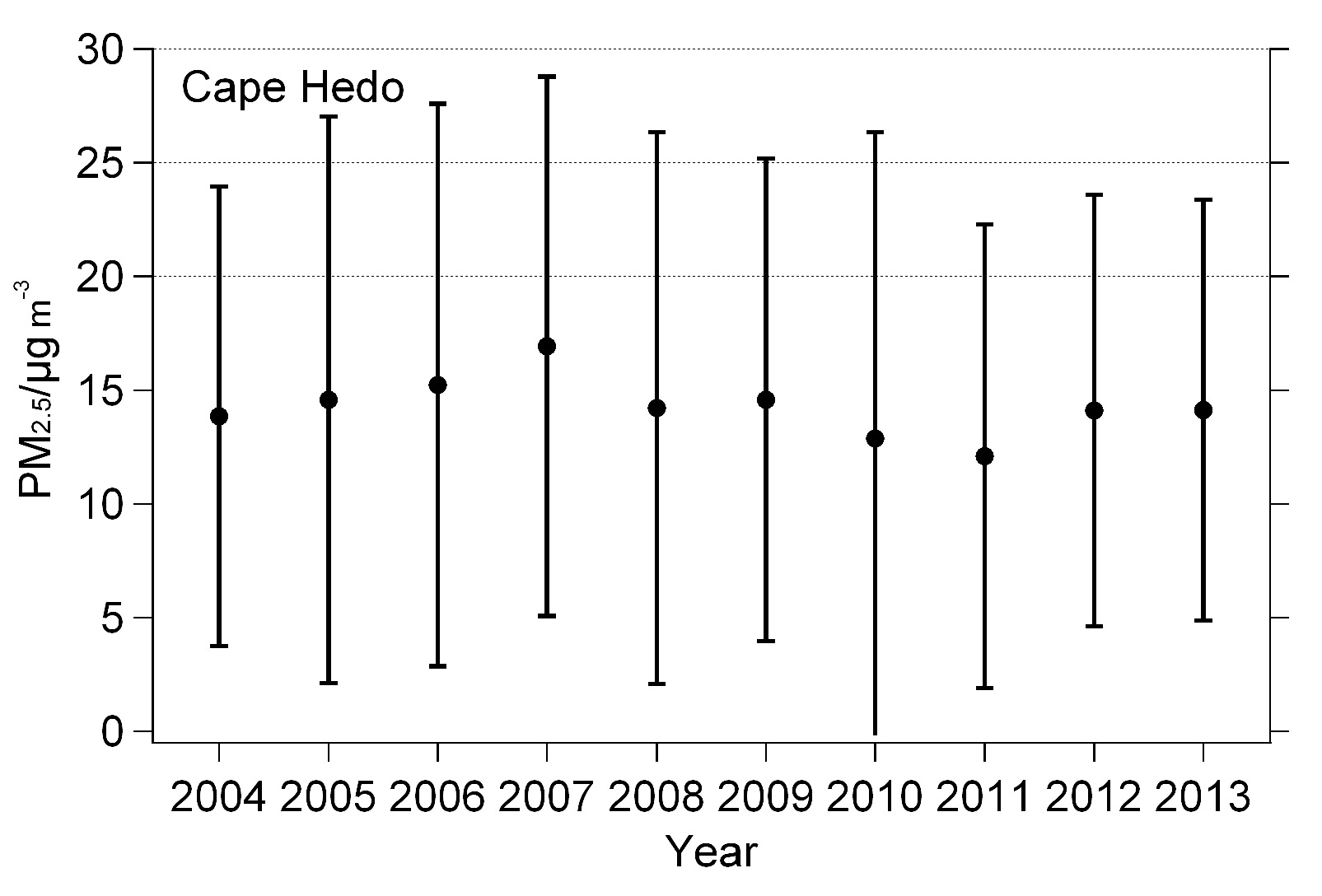Long-term monitoring at CHAAMS and Fukuejima station to investigate the changes of atmospheric emissions and their chemical composition in East Asia
Principal Investigator (Contact person)
Akinori TAKAMI (takamia[at]nies.go.jp) "[at] is replaced by @"
- Overall
- Publications & Link
Overall
Short summary
Long-term monitoring of atmospheric pollutants including aerosols and gaseous species has been conducted since 2004 at Cape Hedo Atmosphere and Aerosol Monitoring Station (CHAAMS) on Okinawa Island and since 2008 at Fukuejima Observatory on an island in Nagasaki Prefecture, Kyushu, in order to observe the changes in the atmospheric environment of the East Asian region. Although trans-boundary pollution events have been observed repeatedly at CHAAMS throughout the period, the peaks of PM2.5 mass and aerosol optical thickness of spherical particles appear to have occurred around 2006-2007. The ratio of nitrate to sulfate is decreasing, which corresponds to the tendency of the Chinese sector in an emissions inventory (REAS). Results obtained from the monitoring have contributed to the understanding of the actual distribution of atmospheric pollutants and their long-term trends.
Summary
Long-term monitoring of atmospheric pollutants including aerosols and gaseous species has been conducted at Cape Hedo Atmosphere and Aerosol Monitoring Station (CHAAMS) on Okinawa Island and at Fukuejima Observatory on an island in Nagasaki Prefecture, Kyushu, in order to observe the changes in the atmospheric environment of the East Asian region.
Observations of optical, physical, and chemical characteristics, including the scattering coefficient, chemical composition, mass concentration, and vertical distribution of aerosols have been conducted since the spring of 2004 at CHAAMS and since the autumn of 2008 at Fukuejima. The long-term monitoring at Fukuejima has revealed that the severe trans-boundary pollution event that occurred in January 2013 was not a special case, but was instead an ordinary repeatedly observed event. It was revealed that both the mass of PM2.5 and aerosol optical thickness caused by spherical particles, measured by LIDAR (Light Detection And Ranging) at CHAAMS, exhibited peaks around 2006. Since then, these quantities have been decreasing (Fig. 1). The ratio of total nitrate to total sulfate has been decreasing since 2005, which is consistent with the tendency indicated by the Chinese sector of an emissions inventory (REAS). This implies a reduction in of sulfate emissions because of the fuel-gas desulfurization (FGD) system that reduces SO2 emissions, and the increment of nitrate emissions largely because of the increase in vehicular use in China. The results of continuous LIDAR observations at Fukuejima have been used in an epidemiological survey conducted by a committee organized by the Ministry of Environment, Japan (MOEJ), as an index of exposure to Asian dust. Several campaign measurements of polyaromatic hydrocarbons (PAHs) in Fukuejima have revealed that the ratios of chrysene and Benzo[b]Fluoranthene, which are the tracer species of coal combustion, to total PAHs are among the highest during the winter season. Metal analysis indicated a wintertime increment of arsenic, lead, and chrome, which are indicators of coal combustion. Similar results were obtained in CHAAMS and these results show that coal combustion remains a major source of emissions during winter in China. Some of these measurement data and a list of peer-reviewed papers are available to the public on the NIES web pages. Atmospheric mercury has been monitored continuously since 2007 at CHAAMS. The obtained results were used during the negotiations for the Mercury Treaty. These types of long-term monitoring data contribute to the understanding of the current situation and trends of atmospheric pollutants in the East Asian region and of trans-boundary pollution into Japan.

Fig. 1 Monthly mean mass concentration of PM2.5 measured by TEOM.
Publications & Link
Publications
The publications are summarized the following page (http://www.nies.go.jp/asia/hedomisaki/Publications.html).
Link
Details are shown in the following site (http://www.nies.go.jp/asia/hedomisaki/home-e.html).